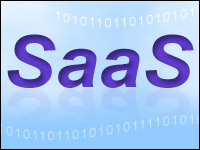
A trend is not a fad. A fad comes and goes quickly, while trends have staying power. Great ideas become trends when they are widely adopted beyond their original driving force.
Such is the case with the marketing trend of direct digital marketing — relevant digital marketing communications that are addressable to a specific individual with an email address, a mobile phone number or a Web browser cookie. As direct digital marketing continues to gain momentum in marketing circles, there is substantial evidence of its impact on development cycles for Software-as-a-Service (SaaS) providers.
SaaS products are uniquely equipped to make the most of emerging trends for a variety of reasons. They are cost-efficient, easy to implement and designed to adapt to changing market conditions with inherent scalability. The construction of on-demand software platforms has been impacted by the newest marketing trend: direct digital marketing.
The Data Mart
A natural evolution of both direct and direct response marketing, direct digital marketing is gaining increasing popularity because a relevant marketing message is its core principle. Consumers respond favorably to relevance regardless of industry, and marketers are just beginning to learn how to properly wield relevance and personalization techniques to meet and redefine sales goals.
For the on-demand platform developer, the challenge is to design a product from the ground up that contains seamless interface between the three primary channels of direct digital marketing — email, mobile, Web — while also being easy to implement, user-friendly software.
To execute successful direct digital marketing, an elemental ingredient in the software platform recipe is a data mart built specifically for quickly turning marketing data points into effective marketing communications. A data mart for direct digital marketing, or a “universal profile management” system, must first be able to gather and store data points from the many disparate data warehouses that high-powered marketing organizations use. In order for a universal profile management system to have the maximum positive impact on marketing communications, the data housed in the system must include information that can drive real action on the part of a consumer.
Not every single data point stored in a Web analytics solution needs to be included for a universal profile management system to perform optimally. While it is possible to build segments and run counts on the number of records in a given segment within a universal profile management system, a Web analytics provider is better suited to supply that type of information.
Rather, the data environment for direct digital marketing must be specifically designed to capture and store the information and data necessary to execute addressable marketing communications to an increasingly multi-channel consumer. The more purpose-built the universal profile management system is for increasing sales, message relevance, or other trendy marketing objectives, the more likely sales goals are reached and subsequently adjusted upward.
Getting the Right Mix
Some examples of usable data that a universal profile management system must store are enterprise customer data, purchase history data, and any preference information captured by forms or surveys. Each of those data categories has something in common: They are examples of information a customer has explicitly shared.
A universal profile management system becomes even more functional when it is not only able to recognize and leverage known customer attributes, but is also able to capture behavioral data like Web site, mobile and email activity, online advertising participation, and organic and paid search activity.
The combination of known and behavioral attributes provides the right mixture of data points necessary for building unique and innovative segments for relevant and personalized marketing communications, no matter what industry or consumer segment is being marketed to. An example of a multi-channel marketing segment that can be built with a universal profile management system is a known customer who is opted in to receive mobile alerts and subscribes to the email newsletter, but who has not opened an email in six months, and who recently abandoned a shopping cart. Building a segment like that demonstrates knowledge of the customer that can be used to more effectively communicate with them and create a sale or conversion event.
Highly targeted segments are great for marketers to use whether they are designing long-term campaign objectives or initiating short-lived tactics designed to reach month-end goals. However, the ability to segment is just one half of the SaaS design trend.
The universal profile management system must also live in close contact with a content environment, preferably a multi-channel content environment. From the perspective of both the marketer and the software developer, the secret to the success of direct digital marketing and a universal profile management system is the close proximity of the data to the actual content marketers are using to communicate.
For example, building a sophisticated multi-channel segment in the same platform that delivers email marketing communications, mobile marketing communications, or targeted Web site content is extremely time-efficient for marketers, freeing them up to concentrate on high-level strategy rather than devoting the majority of their time to tactical campaign execution and coordinating digital logistics.
SaaS in Action
The aforementioned SaaS development trend of housing marketing data and content in the same on-demand software platform is sparked by a number of different marketing trends that all fall under the direct digital marketing umbrella.
Strategies involving highly targeted segments, message relevance, multi-channel campaigns, the ubiquitous marketing “prospect” mobile marketing, and the latest and most compelling tactical marketing and SaaS development trend of onsite targeting, are now all possible thanks to savvy software companies that are able to capitalize on the trends uncovered by marketers. The best way to understand the confluence of direct digital marketing and SaaS software platform development trends is by examining specific examples of direct digital marketing Software-as-a-Service in action.
Before diving into the examples, it is vital to grasp what onsite targeting is and how it works. Onsite targeting is a simple concept. Rather than relegating a Web page to a single message prominently displayed for an audience, onsite targeting plugs into the existing Web page’s framework and transforms the formerly static space into a “live zone” that rotates dynamic, personalized, and relevant content designed to appeal to all of a brand’s diverse customer audience. The content that is displayed is based on the segments built within the universal profile management system.
Onsite targeting is used to create a completely new Web site experience, insert a different hero image into the homepage, or change a single line of copy to a stronger call-to-action. The goal is to create a Web site experience unique to each visitor and designed to achieve a specific outcome — the conversion.
Here are some specific examples of how onsite targeting is already being used in two of the largest industries: e-commerce and hospitality.
The Etailer’s Dilemma
For e-commerce retailers, metrics like revenue per visit (RPV) are important, but the ultimate goal is conversions. E-commerce software platforms have historically done a good job of capturing the basic, straightforward conversion. However, the consumer has evolved more quickly than the e-commerce platforms, and e-retailers are faced with a dilemma. They need improved targeting and personalization functionality to keep the pace of innovation.
However, the options of replatforming an entire Web site can be extremely expensive and time-consuming, while building a homegrown e-commerce “patch” or platform is unrealistic, with a similar opportunity cost. Onsite targeting, delivered on-demand, is the perfect solution.
One compelling, positive trait of onsite targeting, as seen in the following example, is the close relationship it maintains with its direct digital marketing channel brethren. A multi-channel approach is always effective when each channel reinforces the message communicated through the other channels.
One online retailer of premium products built a segment around email newsletter opens, then used it to change the content displayed on the homepage when launching a new product. The approach was simple — if a Web site visitor has opened the new product email, reinforce that message by displaying the new product content again on the homepage. The e-commerce retailer discovered they were able to improve conversions by 25 percent with this simple onsite targeting approach.
They also used built-in testing and optimization tools within the onsite targeting solution to test different executions of the content and determine which version was most effective. By using onsite targeting to plug into their existing e-commerce software infrastructure, they increased sales and changed their perception of how a new product launch should be executed in the future.
The ‘Shoulder Stay’
For digital marketers in the hospitality industry, the goal is getting travelers to book their rooms with the online booking engine. When the hotel Web site visitor completes the first step in the process — inputting the date range of their stay — that data is immediately stored in the universal profile management system, and a segment is created for any traveler with a departure date of Friday or an arrival date of Monday.
As the traveler navigates through the remainder of the booking engine, the onsite targeting software is able to replace a static offer lacking relevance with a targeted incentive for the traveler to extend their stay if they are going to depart on Friday, or make arrangements to arrive for the weekend if the original arrival day was a Monday. This “shoulder-stay” offer within the booking engine enhances the Web site visitor’s experience with a relevant message at the most crucial moment in the process of booking a room.
Like the e-commerce example, onsite targeting’s inherent testing and optimization tools are also used for this tactical shoulder stay campaign. Making slight changes to the incentive (e.g., a free golfing package versus lowering the room price), the image, and the copy provide additional tools for increasing conversions. The ability to always display the most effective content for each individual Web site visitor provides additional security for the marketer and ensures the Web site visitor is always seeing the best possible offer to satisfy their needs.
One of the many attributes that makes software a fun and fascinating industry to be in is the rapid development cycles necessary to transform new and exciting marketing trends like message relevance, addressability and their catch-all, direct digital marketing, into real and practical software solutions within the on-demand model.
The marketing industry trend of multi-channel segmentation has been recognized and transformed by the software industry into universal profile management, now a software trend. The trend of missed conversion opportunities that is flummoxing e-commerce and hospitality marketers alike has been recognized and transformed by the software industry into onsite targeting with testing and optimization tools, now a software trend.
Savvy software companies are recognizing marketing trends within various B2C (business to consumer) industries and driving development trends within the Software-as-a-Service industry. The flexibility of Software-as-a-Service has empowered direct digital marketers to become more flexible — and successful — in their marketing communications. As long as marketers continue to recognize their important trends, the on-demand software industry will keep up and continue to push, redefining what is possible.
Brian Deagan, a thought leader in direct digital marketing, is cofounder and CEO of Knotice, a direct digital marketing solutions company. Deagan can be reached at [email protected]. More information on Knotice is available at the company’s blog.














































Good article. Thanks for sharing.
Dave
Surge, LLC
http://www.surgeforward.com
Brian is right on the money, most companies have no idea how to accurately measure ROI based on individual marketing events and have quite a bit of difficulty understanding true conversions and the lead generation process in general.